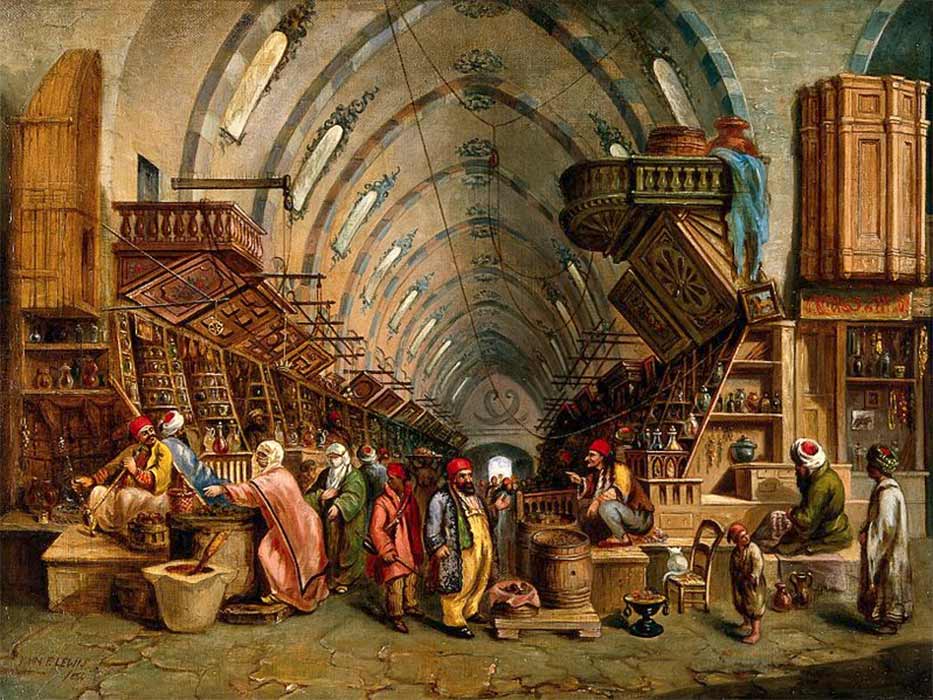
The Periplus Of The Ports Of Ethiopia, The Hidden Empire
Known as the Hidden Empire, Ethiopia’s official name, until recently, was Abyssinia. Its history fades back into the mists of time and for some reason, Ethiopia has largely been written out of world history. Despite being the home of ‘Lucy’, one of the oldest ‘human’ skeletons ever found, mainstream historians maintain that civilization did not come to Ethiopia until around 700 BC at Yeha, a short distance east of Axum. It would seem that civilization in Ethiopia is much older than that, as Axum was a trading center for ivory, gems, incense, spices and gold for many thousands of years. After the time of the First Council of Ephesus (431 AD) and then the conquest of Arabia by Mohammed’s armies in 630 AD, Ethiopia basically disappears from Western history. In later years while Europe, North Africa and the Middle East continued to trade and exchange ideas, their commerce centered on the Mediterranean and the Black Sea and Ethiopia was largely excluded. It became the ‘Hidden Empire’.

The Bazaar (Wellcome Images/ CC BY-SA 4.0)
The Kingdom Of Saba
Ethiopia was apparently an Egyptian satellite country that later became the Kingdom of Saba of the Horn of Africa, expanding over a large region on both sides of the Red Sea, controlling much of present-day Yemen, Ethiopia and Somalia. The Kingdom of Saba was a center for all sorts of trading goods coming from central Africa, the Horn of Africa, southern Arabia and India. Due to its geographical divide, Saba was not able to hold together and began to break up into separate empires, with the Axumite empire on the African side. The Arabian side broke up into countries called Saba, Qataban, Himyar and Hadramut.
The Hussle Of Ethiopia In Its Hey-Day
Ethiopia and its port of Adulis, today located about 30 miles (48 kilometers) south of the modern port of Massawa in the Gulf of Zula, was an important maritime trade center and it would have received ships from all over coastal Arabia and East Africa as well as ships coming directly from India. It was a green and prosperous country with a dense population, intense agriculture, religious temples and thriving markets. Ethiopia is today, as in ancient times, a mountainous land of many villages, farms and fields. Millions of sheep, goats, donkeys and cattle roam throughout the land (including the village streets) and a wide variety of crops are grown—it is the birthplace of coffee, the traditional drink of Ethiopia, which was also gaining popularity in Arabia and Egypt. The former Sabean port of Muza became the coffee-hub known as Mocha, giving its name to a type of roasted coffee bean and later to a hot drink combining coffee and chocolate.

Coffee beans from Ethiopia (CC0)
The Ports Of Ethiopia
It seems that Axum in 950 BC was the controller of the important port cities of Adulis, Muza (Mocha), Qana and Aden, which was called Eudaemon. The closest port to Axum was Adulis; other important ports were mainly on the Arabian side of the Red Sea, which then opened up to the Indian Ocean. Sailors could continue down the coast of what is today Somalia to various ports in East Africa of that time. Or the ships could sail along the Arabian coast, or directly across the Arabian Sea to ports on the west coast of India.
Ethiopia’s major port of Adulis was an important trading hub, yet it was virtually unknown to European historians, who only vaguely knew that India and China were in eastern Asia. In fact, beyond Persia it was said that there were three Indias; they could be reached by boat from the Red Sea, but Europeans did not seem to be cognizant of this fact—this knowledge was largely lost by the time of Marco Polo. Rather, journeys to India were taken almost exclusively by camel caravan. If one fared with knowledgeable sailors and in a good boat, then voyage by sea was probably preferable.




